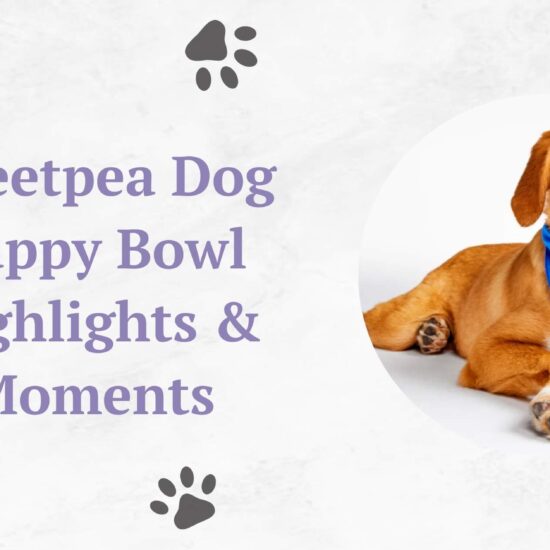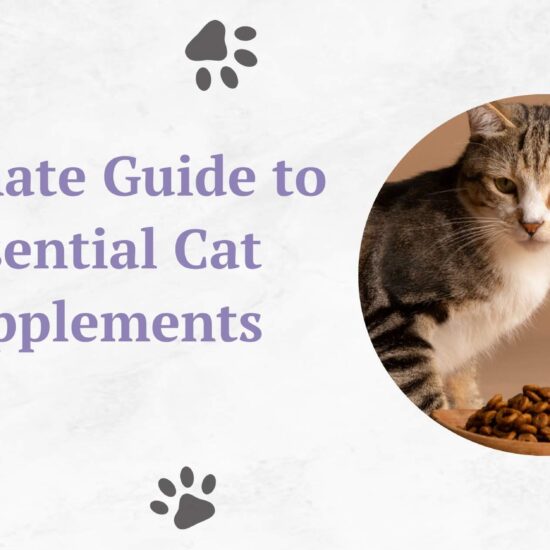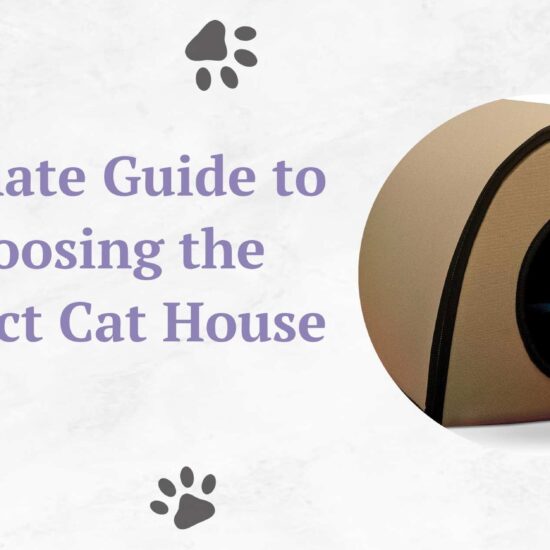Table of Contents
This article will discuss the top cat breeds compatible with other pets. You may ensure easy integration and promote harmony for all your cherished animals by being aware of the traits of these cat breeds.
Cat Breeds Compatible with Other Pets
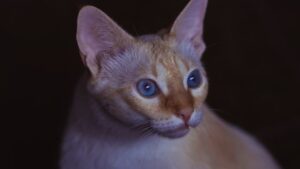
| Cat Breed | Temperament | Energy Level | Socialization Needs | Compatibility with Other Pets |
|---|---|---|---|---|
| Abyssinian | Active, Extroverted | High | High | Excellent |
| Maine Coon | Friendly, Laid-back | Moderate | Moderate | Excellent |
| Ragdoll | Tranquil, Amiable | Low | Low | Excellent |
| Siamese | Social, Interactive | High | High | Excellent |
| Burmese | Loving, People-focused | Moderate | High | Excellent |
| British Shorthair | Calm, Laid-back | Low | Low | Good |
| Russian Blue | Docile, Reserved | Low | Low | Good |
| American Shorthair | Flexible, Adaptable | Moderate | Moderate | Excellent |
| Sphynx | Friendly, Outgoing | High | High | Excellent |
| Birman | Kind, Loving | Moderate | Moderate | Excellent |
| Turkish Van | Social, Energetic | High | High | Excellent |
| Devon Rex | Mischievous, Outgoing | High | High | Excellent |
Abyssian
The active and extroverted nature of the Abyssinian cat breed makes it a great choice for households with several pets. These cats enjoy socializing with other animals, especially dogs, and other cats, and are quite gregarious. Because of their lively character, Abyssinians may readily adapt to various situations and develop close relationships with both their owners and other pets which makes them one of the top cat breeds compatible with other pets. They frequently excite the curiosity and adventurous spirit of other animals, encouraging comradery and bonding.
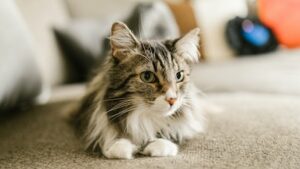
Maine Coon
One of the biggest domestic cat breeds, the Maine Coon, is friendly and accepting, making it a great pet for both people and other animals. Despite their size, Maine Coons are known for being amiable, and because of their laid-back nature, they typically get along well with many different animals which makes them one of the top cat breeds compatible with other pets. They are an excellent choice because of their versatility and sociability, which allow them to easily adapt to various personalities and play styles. All the creatures in the home benefit from their patient, quiet dispositions, which help foster a serene and harmonious environment.
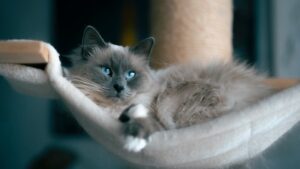
Ragdoll
Due to their tranquil nature, ragdolls have acquired the nickname “gentle giants” among cat lovers. Ragdolls are renowned for being amiable and getting along well with other animals, including dogs and other cats. Peaceful coexistence is made possible by their propensity to go limp when held, which gives them their name. This trait makes them friendly and non-threatening to other creatures. Ragdolls are laid-back and easygoing by nature, which promotes a stress-free atmosphere and makes other pets feel at ease around them which makes them one of the top cat breeds compatible with other pets.

Siamese
Siamese cats are not only stunning cats but also very friendly animals. They enjoy company, whether it comes from people or other animals. Siamese cats have a reputation for being interactive and for developing close relationships with other animals. Siamese cats are one of the best cat breeds compatible with other pets because of their playful and social nature, which promotes harmony in the home. Their captivating personality frequently draws the attention of other pets, encouraging friendly interactions and establishing a sense of community among all the animals in the house.

Burmese
Burmese cats are well renowned for being loving and people-focused, which makes them a fantastic choice for cat breeds compatible with other pets. These cats are renowned for forming strong ties with their owners and are frequently compared to dogs in terms of devotion. They tend to be friendly and get along well with other animals, making your house a peaceful and caring place. They are a good addition to houses with several pets because of their kind and affectionate conduct toward other animals.
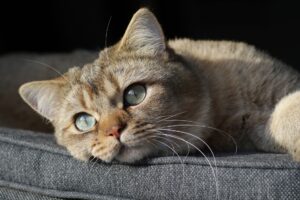
Shorthaired British
British Shorthair cats make good cat breeds compatible with other pets because of their calm and laid-back personalities. They are renowned for being able to easily adapt to various settings. British Shorthairs may take some time to warm up to other animals, but with time they can develop close friendships since they are amiable and tolerant. Their kind and friendly nature fosters harmony and fosters the development of strong bonds among all household pets.
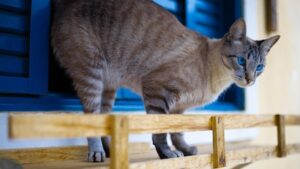
Russia Blue
Russian Blue cats have a reputation for being docile and reserved. They tend to be reserved around strangers but develop close bonds with their owners and other family pets. Typically non-aggressive, Russian Blues are cat breeds compatible with other pets, especially dogs. The independent yet loving nature of Russian Blue cats might help your other pets live in harmony with one another. They give a sense of serenity and tranquility to homes with other pets because of their guarded yet affectionate temperament.
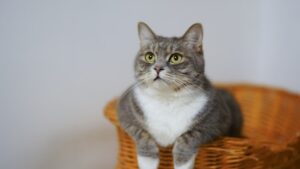
Shorthaired American
The American Shorthair is a flexible and adaptable breed that fits in well with households with multiple pets. They get along well with other cats, dogs, and even tiny animals because of their amiable personality and placid demeanor. Their laid-back demeanor and outgoing personalities foster harmony in the workplace. The social and amiable temperament of American Shorthairs contributes to the creation of a warm and welcoming environment that enables all the pets to live together happily and peacefully making them one of the top cat breeds compatible with other pets.
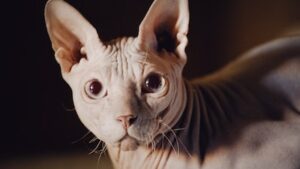
Sphynx
Sphynx cats are quite friendly and love the company of other animals, despite their unique appearance. They get along well with dogs, cats, and other animals because of their energetic and outgoing personalities. Sphynx cats eagerly seek out interactions, which can support the development of satisfying bonds with their animal neighbors. Their outgoing and playful personality fosters a vivacious and active environment that encourages participation and camaraderie among all the household pets making them one of the top cat breeds compatible with other pets.
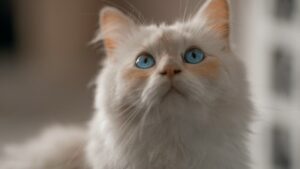
Birman
Birmans are well renowned for being kind and loving, which makes them excellent companions for both people and other animals. They get along well with dogs and other cats and are typically outgoing and gregarious. Birmans thrive in social settings and can easily adjust to a home with many pets. Their gentle and kind nature contributes to the development of a warm and loving atmosphere that fosters harmony and contentment among all the household pets resulting in them being the top cat breeds compatible with other pets.
Note: There might be affiliate links mentioned here. We may receive a commission if you purchase a product through an affiliate link. There is no additional charge for you. Please do your own research before making any online purchases.

Turkish Van
The Turkish Van is a social and energetic breed that frequently appreciates the companionship of other animals. They get along well with dogs, cats, and even birds because of their playful and daring attitude making them one of the best cat breeds compatible with other pets. Turkish Vans are known for developing close relationships with their avian and animal friends, which promotes harmony in the home. All the pets in the home benefit from their friendly interactions and mutual respect as a result of their playful and adventurous activity, which also provides a dynamic and interesting environment.
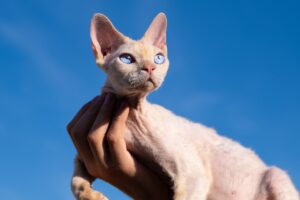
Devon Rex
Because of their well-known propensity for friendliness and socialization, Devon Rex cats make wonderful pet companions. They are amusing and mischievous by nature, which might be useful when interacting with other animals. Devons often get along well with dogs, cats, and even smaller pets, making for a happy and active home. Their joyful yet mischievous personality brings a sense of life and enthusiasm to the home, encouraging good relationships and playful interactions between all the animals making them one of the best cat breeds compatible with other pets.
Integration of Cats with Other Pets
For the sake of fostering harmony and happiness in your house, it’s crucial to ensure a peaceful integration of cats with other pets. Along with selecting the right cat breed, you may encourage healthy connections between your animal companions by taking these additional actions.
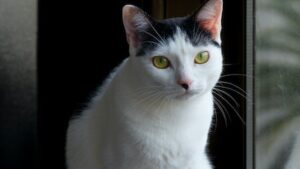
A Sluggish Start
Your cat’s integration with other pets for the first time can be challenging, especially in multi-species households. Before any face-to-face contact, give the new cat time to become used to the smells of your existing pet to ensure a smooth assimilation. Give the new cat some time to get used to its new surroundings by putting it in a separate room with food, drink, and a litter box in order to ensure a smooth integration of cats with other pets.
Allow your current pets to approach the locked door and smell the new cat during this period. They can get to know one another’s odors without actually speaking to one another, which helps lessen tension and anxiety adding up to a smooth integration of cats with other pets. Change the cats’ living areas throughout the day so they get used to each other’s scent.
It’s time to move on to supervised face-to-face cat integration with other pets in a controlled atmosphere after the initial acquaintance through scent exchange. Select a neutral area, such as a large, strange room, where none of the animals will feel possessive. Keep the conversations brief and pay great attention to their body language. Be patient at this phase as the animals are still establishing their hierarchy and boundaries, so some early growling or hissing is typical.
Adequate Supervision
The early stages of the integration of cats with other pets require careful oversight. Keep a close watch on the interactions between your pets and be ready to step in if any disagreements or aggressive tendencies occur. While some vocalization and posturing may take place, it is crucial to make sure that none of the animals are physically harmed. Keep the meetings upbeat and encouraging, rewarding all animals with praise or goodies for being nice and calm.
Give the animals some space apart if you observe any indications of stress or anxiety before trying another meeting. Keep in mind that each pet may acclimatize to the new environment at a different rate, and pushing interactions might result in increased stress and negative associations.
Equitable Focus
Making sure all pets receive the same amount of love and attention is a common concern in houses with many pets. To avoid jealousy or feelings of neglect while cats integrate with other pets, it’s essential to keep giving your current kitties love and care. Set aside time for one-on-one bonding with each pet so you can do things they like to do, like play, groom, or cuddle.
By giving each of your pets equal attention, you promote good behavior and deepen your relationship with them. This makes them feel safe and at ease, which makes it simpler for them to embrace the new member of the family.
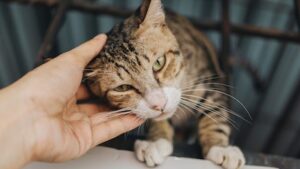
Independent Spaces
Maintaining a sense of personal space and avoiding territorial disputes requires designating specific places for each pet. Give each animal its bed area, food area, and litter box. They can feel safe and comfortable since they have a place of their own to go when they need some alone time.
It’s crucial to create safe areas for every pet in multi-species households to retreat to in times of stress or overwhelm. Particularly cats enjoy vertical locations like cat trees or shelves where they can examine their surroundings without being directly in it. On the other hand, dogs could appreciate using their crate as a haven. You promote peaceful cohabitation by respecting their demand for personal space ensuring smooth cat integration with other pets.
Positive Reward
A potent strategy for influencing positive behavior and encouraging harmonious cats’ integration with other pets is positive reinforcement. Give the animals gifts, praise, or affection whenever you notice them behaving in a kind or calm manner. Your pets are more likely to repeat the desired behavior when they receive positive reinforcement, which builds good associations.
Celebrate the times that your pets play together, interact together, or just peacefully coexist in the same area. The more enjoyable interactions they have, the more likely they are to form close ties and welcome the new cat into the family.
In conclusion, gradual introductions, careful supervision, equal attention, separate places, and positive reinforcement are required for the cat’s integration with other pets into a multi-pet family. Every action is essential to maintaining good relationships and establishing a peaceful home environment for all of your cherished pets. Throughout the process, be understanding and patient with your pets as they may need some time to get used to the new dynamics. Your animal family members can coexist in harmony with one another with love, patience, and good care.
FAQs
What is the primary subject of this article?
The article’s main emphasis is selecting the right cat breed that gets along with other animals and encouraging a peaceful environment in multi-pet households.
Why is selecting the right cat breed that gets along with other animals so important?
Selecting the right cat breed that gets along with the others guarantees that your animals may live together quietly, preventing conflicts and fostering goodwill.
How can I recognize if the way cat types interact with other animals is appropriate for cohabitating?
Cats types interacting with other animals should be generous, peaceful, and friendly.
Are Abyssinian cat breeds compatible with other pets?
Abyssinians have an exuberant and extroverted nature, which makes them quite gregarious and like associating with other animals.
Do Maine Coon cats make good canine friends?
Due to their tolerant and kind temperament, Maine Coons typically get along well with dogs.
How can Ragdoll cats encourage harmonious coexistence with other animals?
Ragdolls get along well with other animals because of their tranquil temperament, non-threatening conduct, and quiet demeanor.
Can Siamese cats adjust to sharing a home with other animals?
Siamese cats are quite gregarious and can bond with different animals very quickly, which helps maintain harmony in the home.
Why are Burmese cats appropriate cat types interacting with other animals?
Burmese cats are friendly and affectionate, fostering a pleasant environment for all household pets.
What adaptations do British Shorthair cats make to coexist with different animals?
Over time, British Shorthairs can develop close relationships with other pets thanks to their patient and laid-back nature.
Why are Russian Blue cats an asset in multi-pet households?
The gentle and restrained temperament of Russian Blues promotes harmonious connections with other animals.
How can I make sure that my cat types interact with other animals?
For seamless integration, gradual introductions, appropriate supervision, equal attention, giving different locations, and positive reinforcement are crucial.
Do Sphynx cats get along with other kinds of pets well?
Sphynx cats are compatible with a variety of animals since they have an outgoing nature and actively seek out connections.
What qualities make Birman cats excellent pets and human companions?
Birmans foster positive interactions with dogs and other cats because they are kind, affectionate, and gregarious.
Do Turkish Van cats get along well with other animals?
Turkish Vans do love the company of dogs, cats, and even birds because of their playful temperament.
How do Devon Rex cats help maintain harmony in a home with different animals?
Devon Rex cats provide life and excitement to the home and encourage excellent relationships with other animals because of their outgoing, gregarious natures and mischievous personalities.
Conclusion
For a pleasant home, choosing a cat breed that gets along with other animals is crucial. The cat breeds included in this article—including Abyssinians, Maine Coons, Ragdolls, Siamese cats, Burmese cats, British Shorthairs, Russian Blues, and others. They are renowned for being gregarious, affable, and flexible, making them good pet companions. You can make sure that your home is a tranquil and caring place for all of your pet animals by learning the traits of these breeds and taking the required steps for a smooth integration. To establish healthy connections with your pets and to foster a sense of camaraderie and togetherness among the four-legged members of your family, keep in mind that patience, appropriate introduction, and equal attention are essential.



